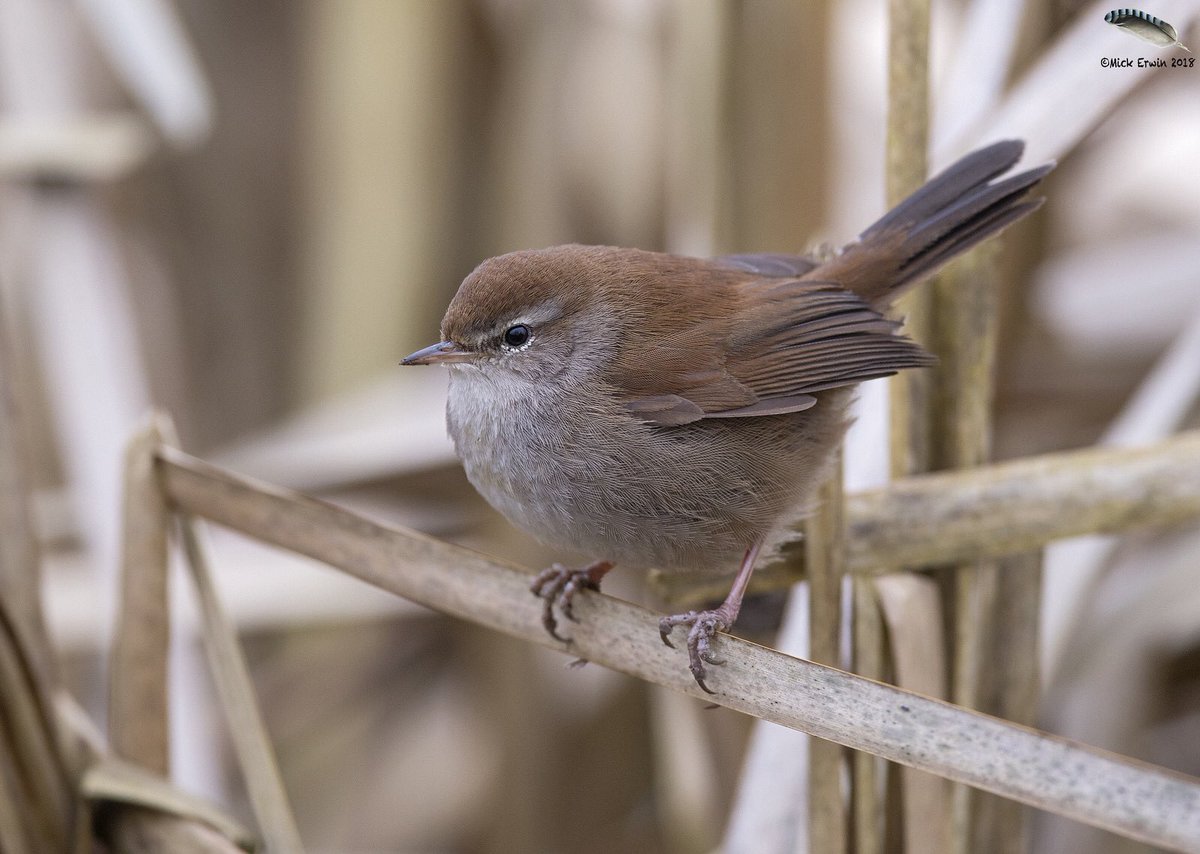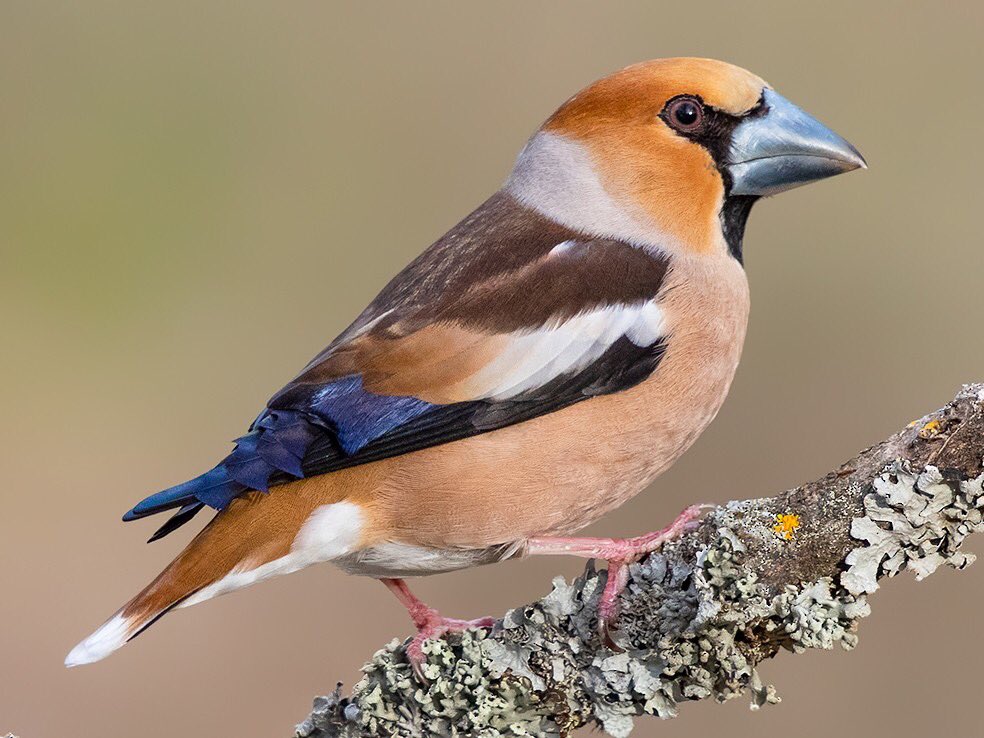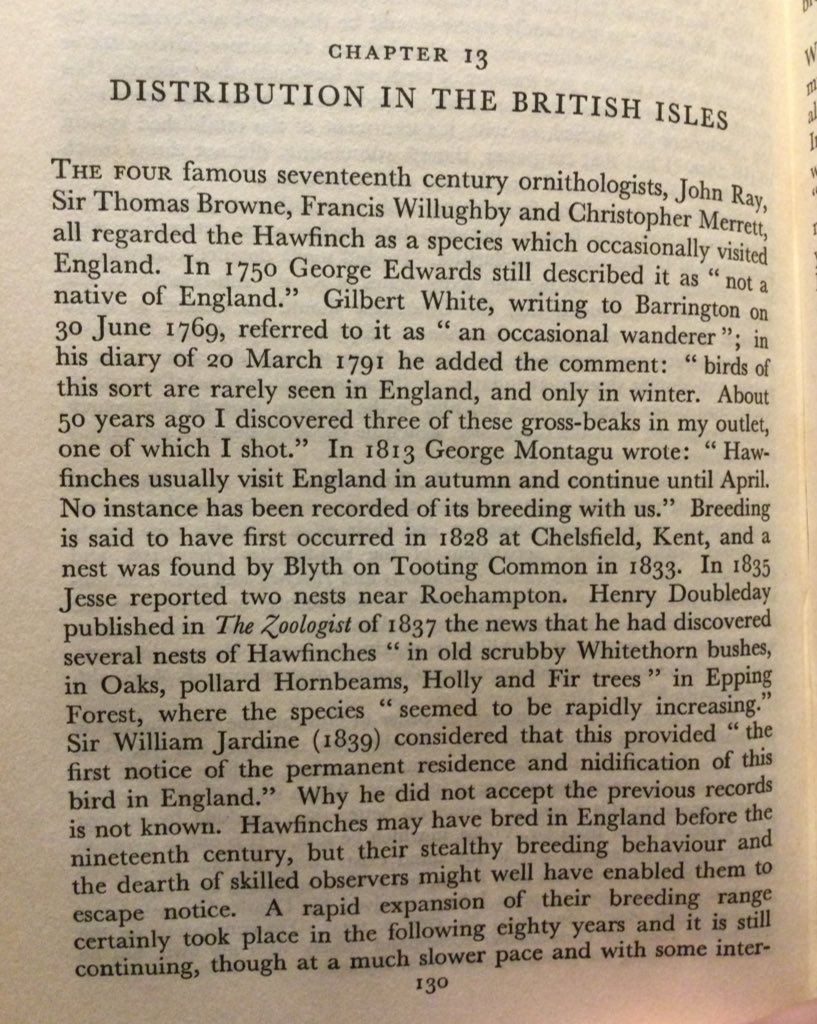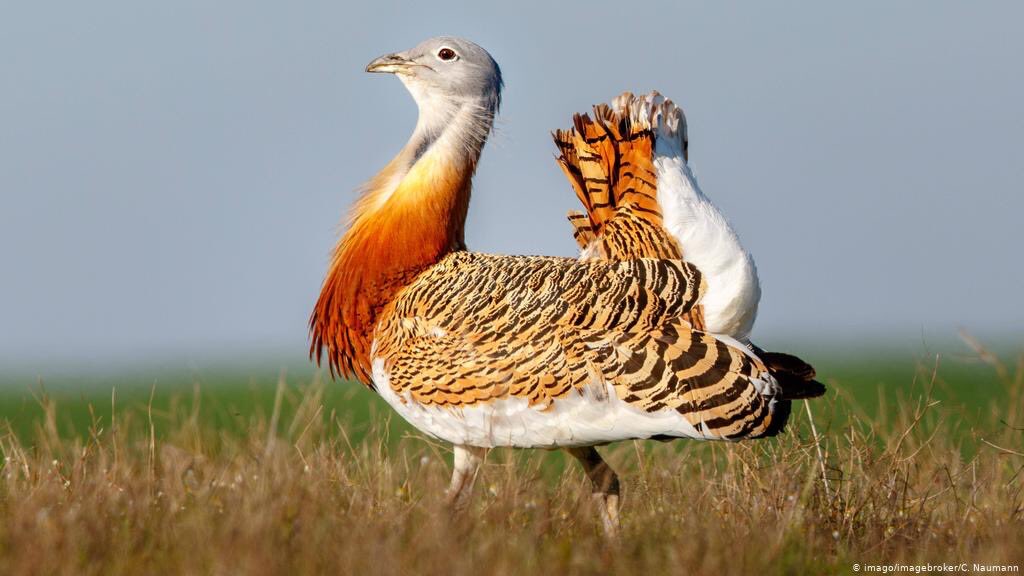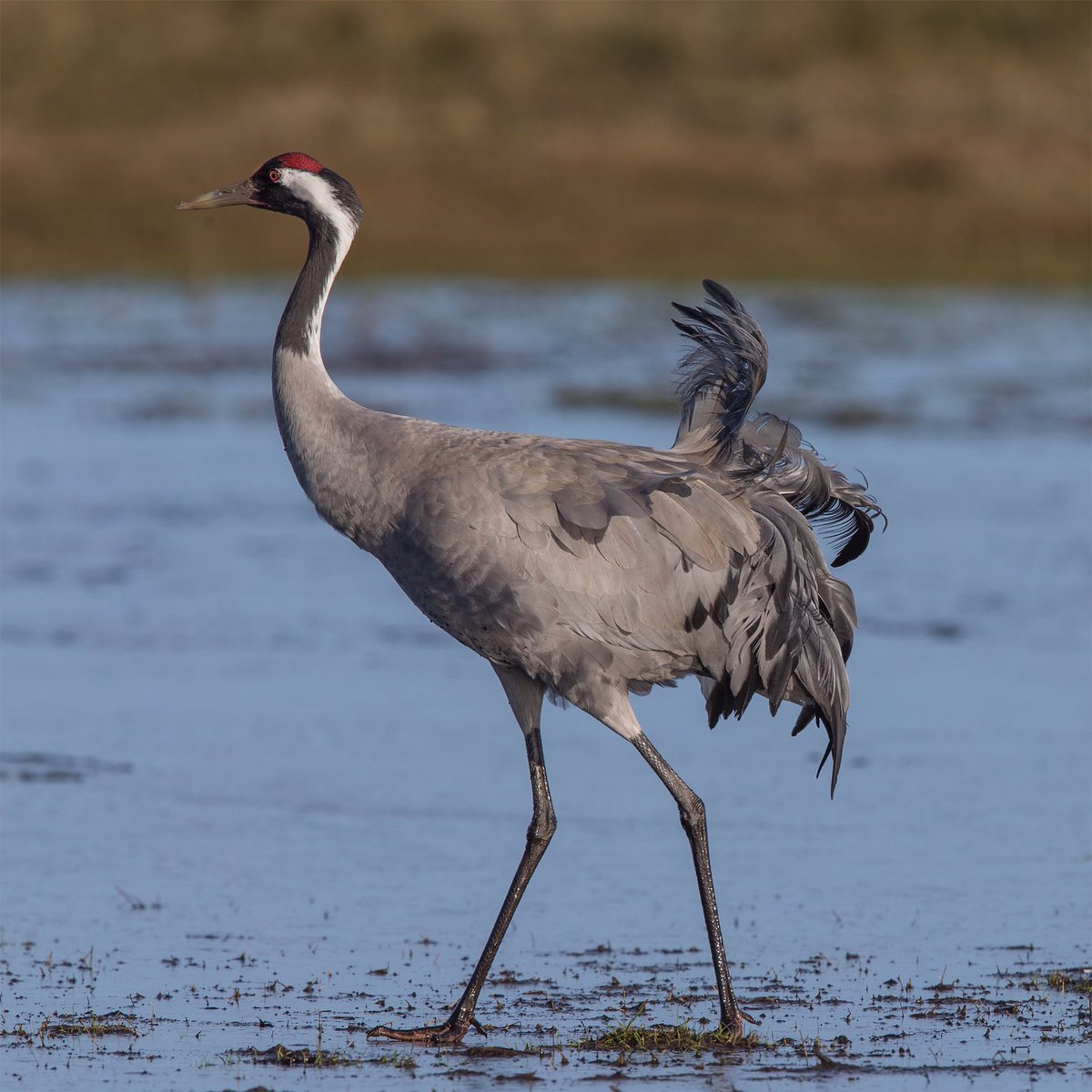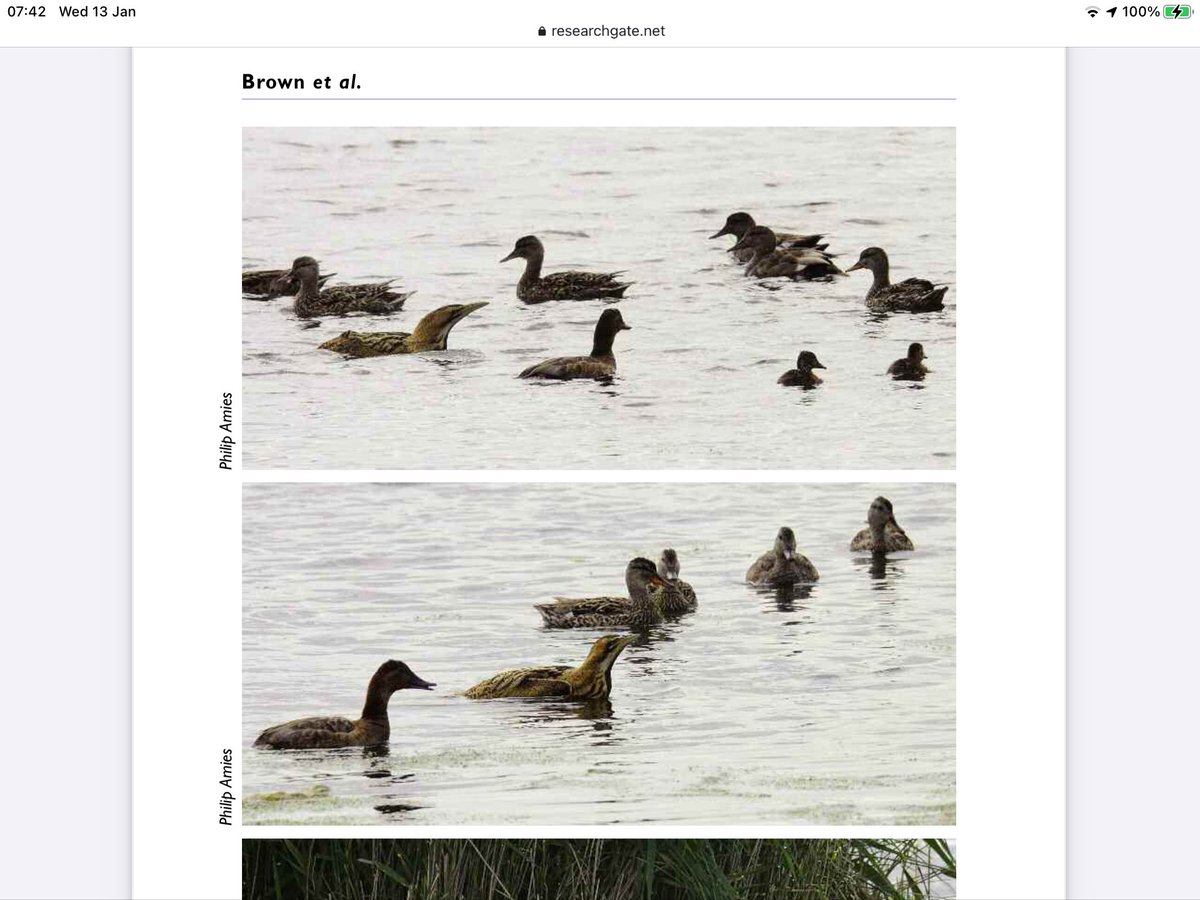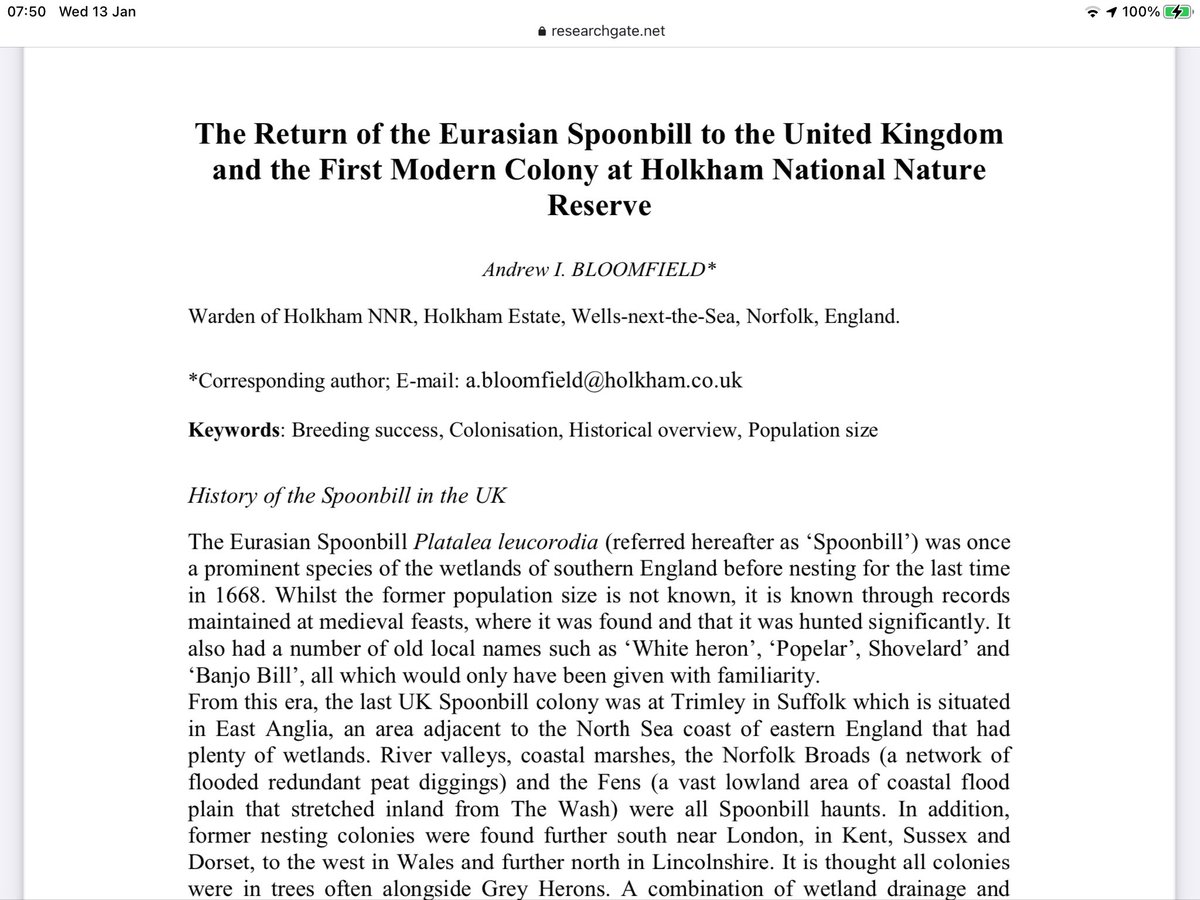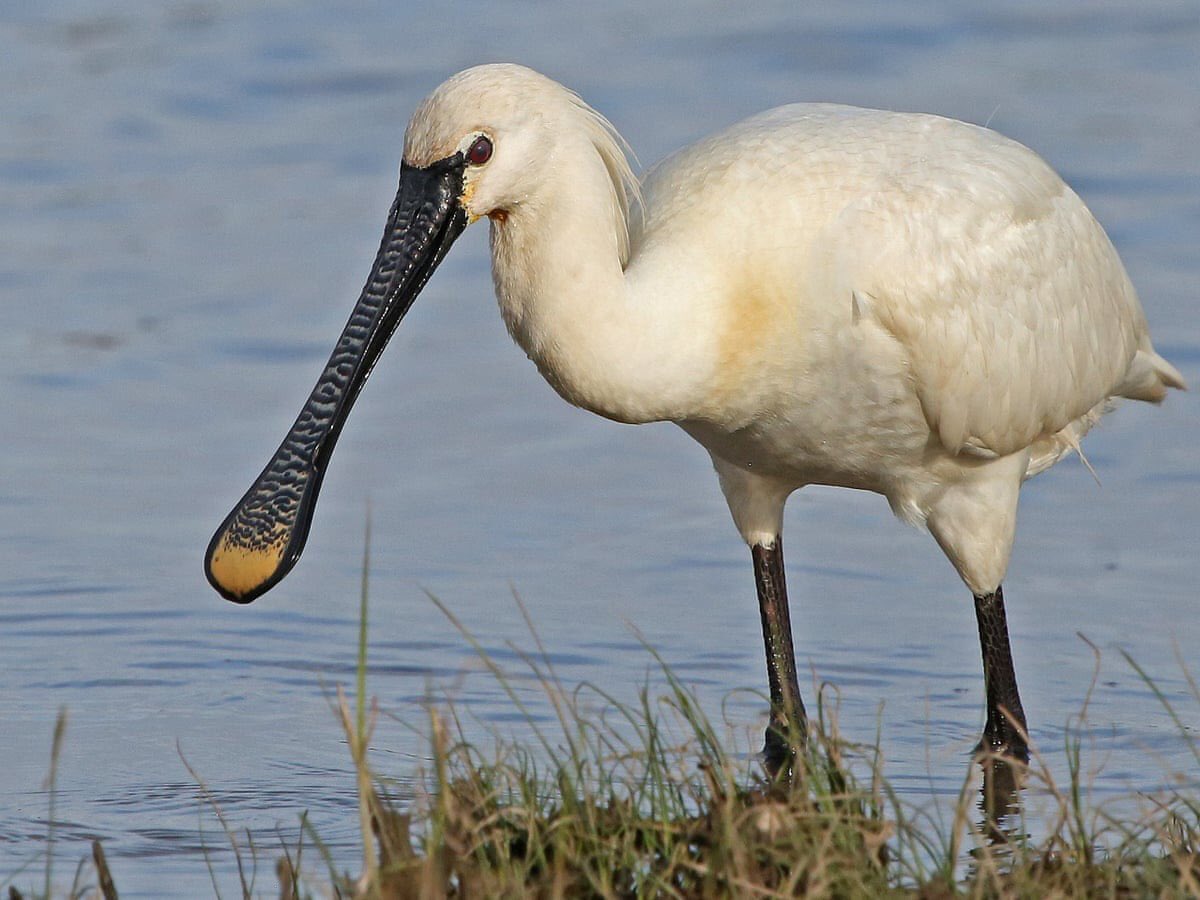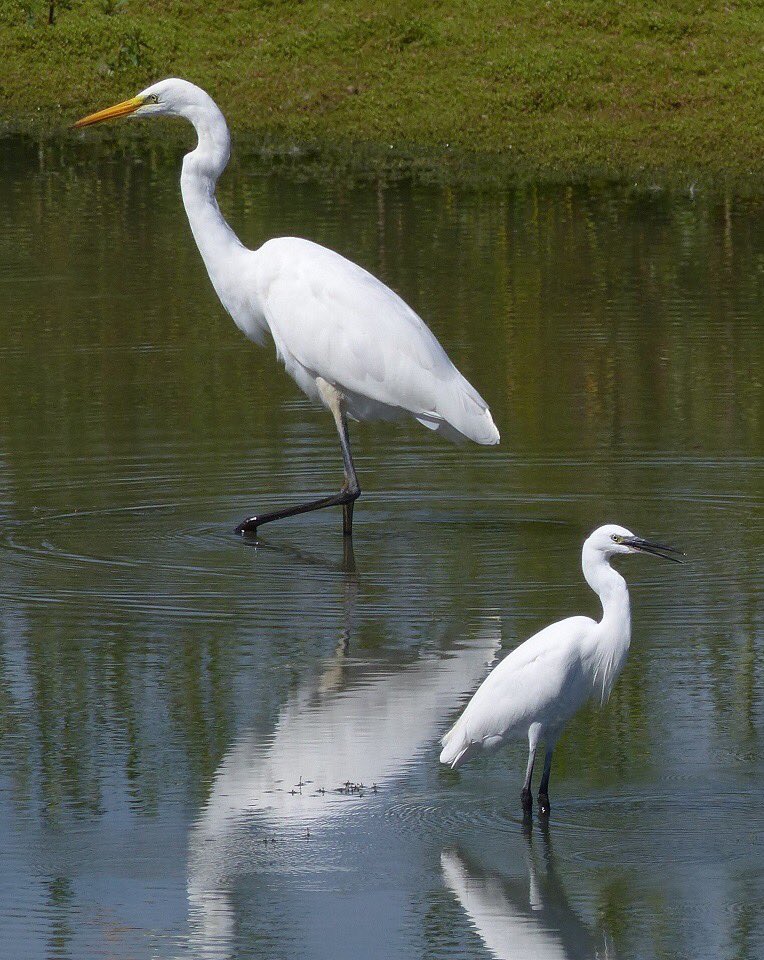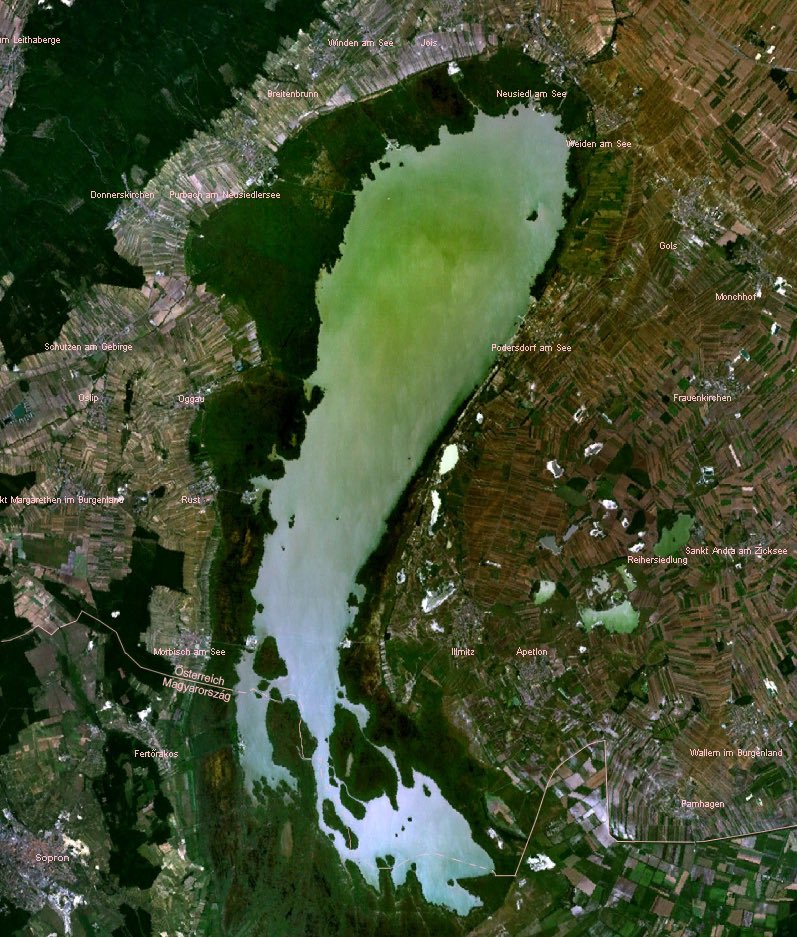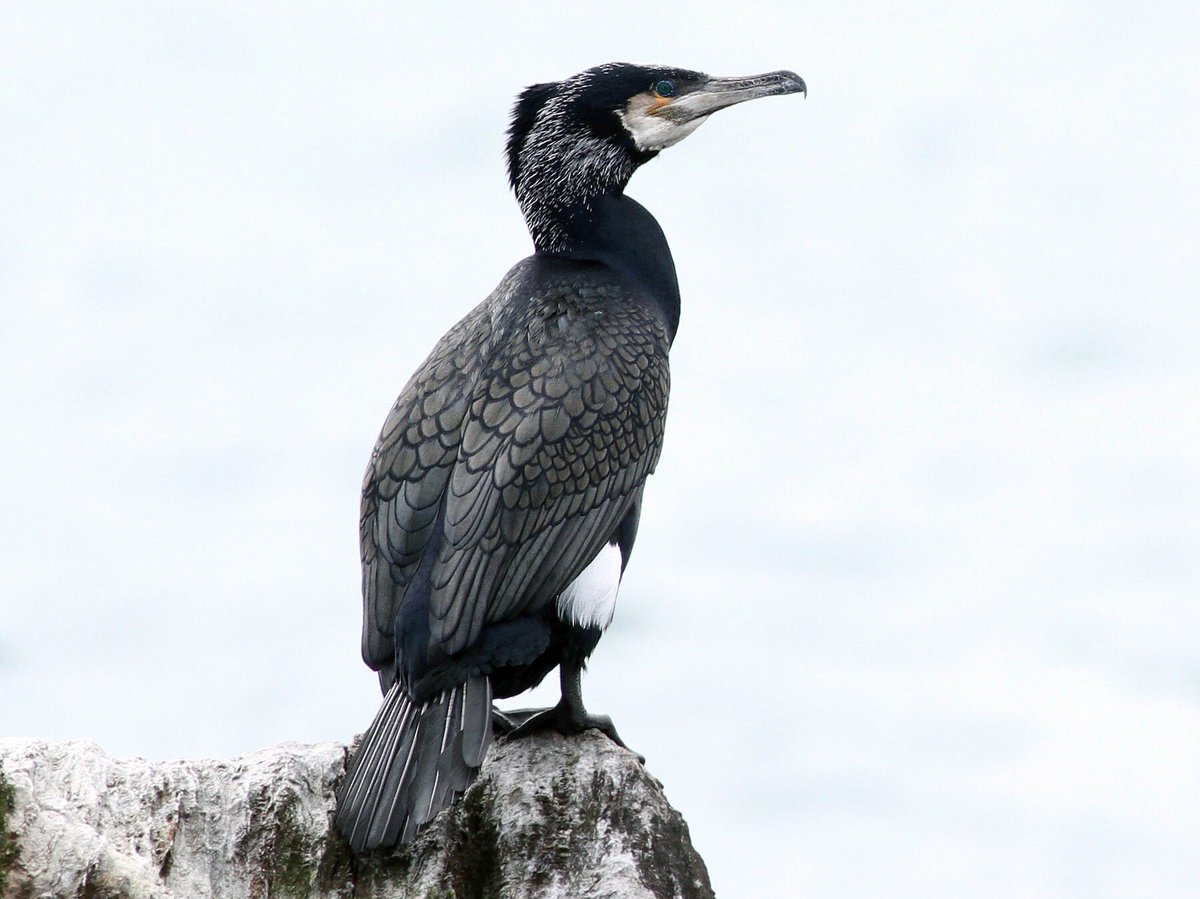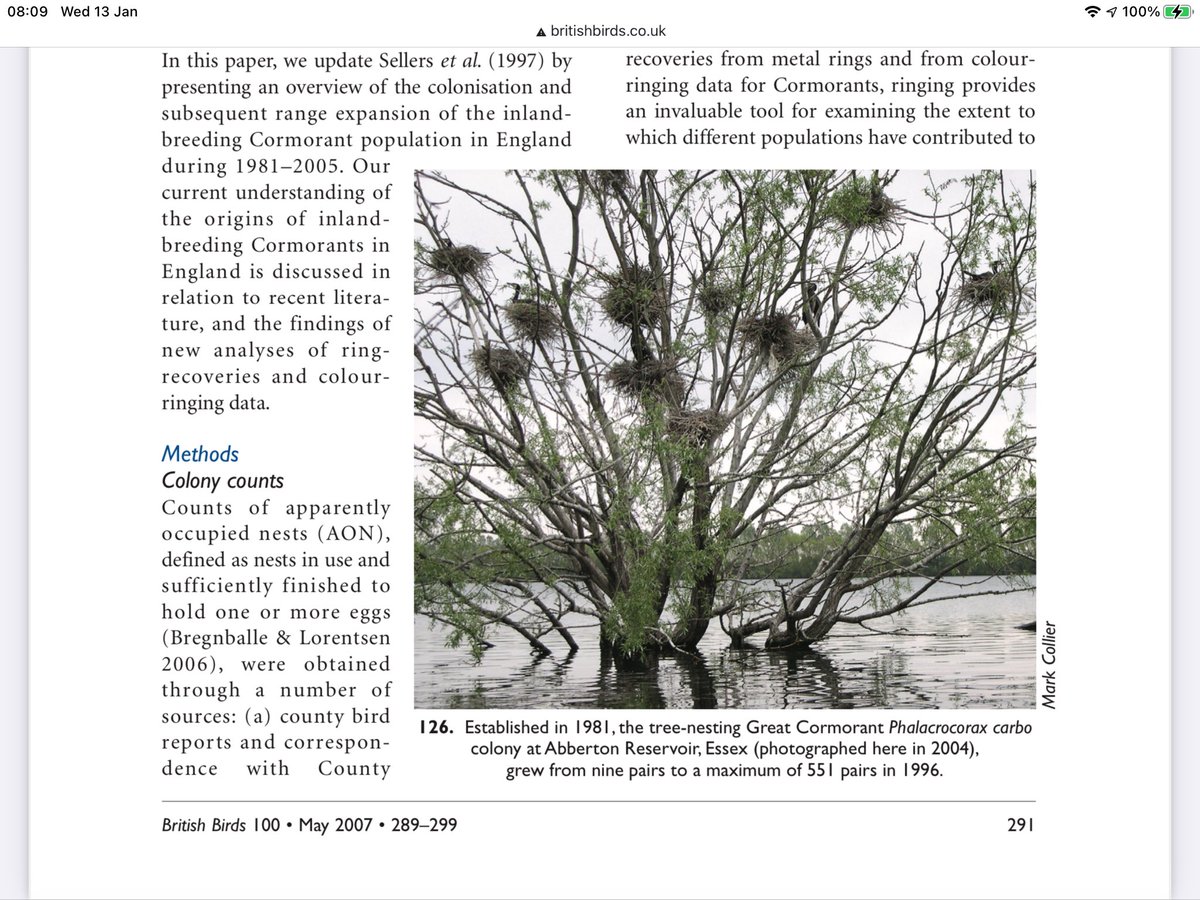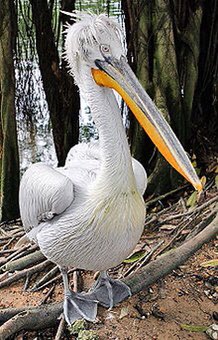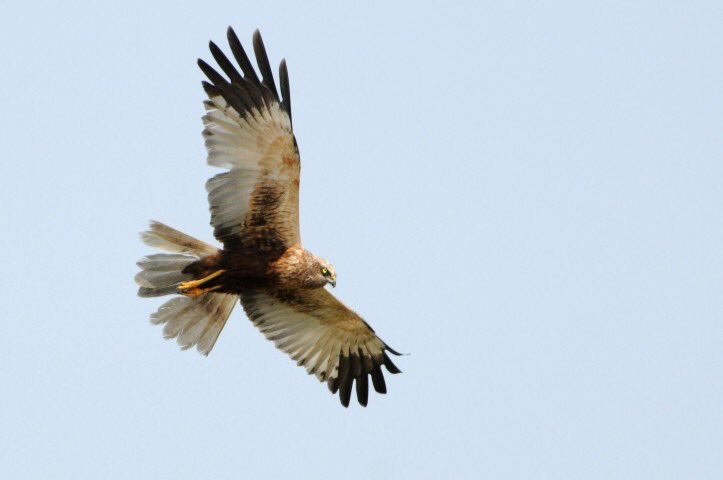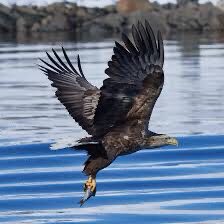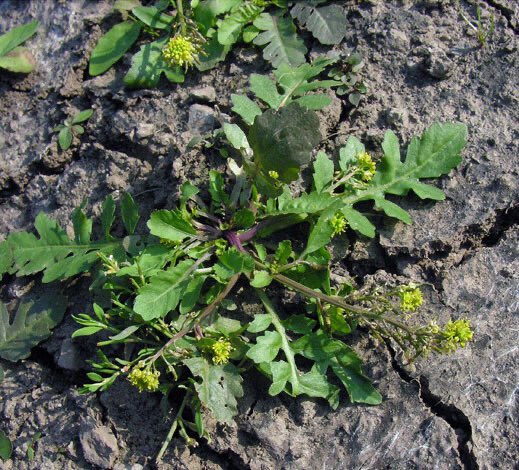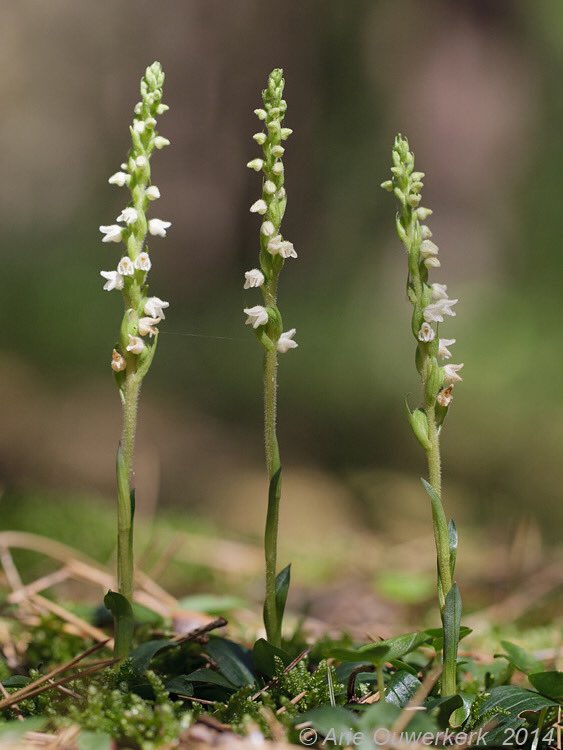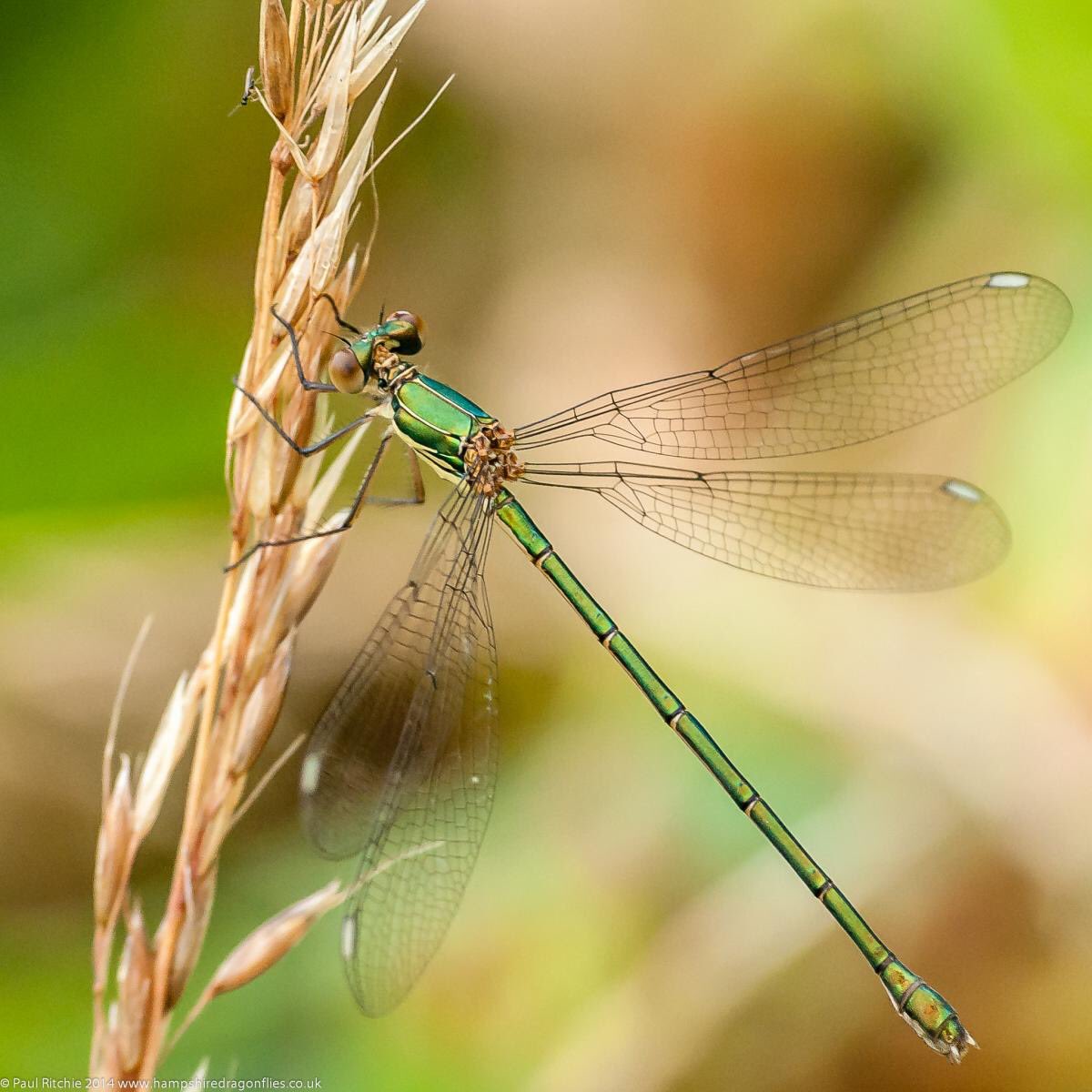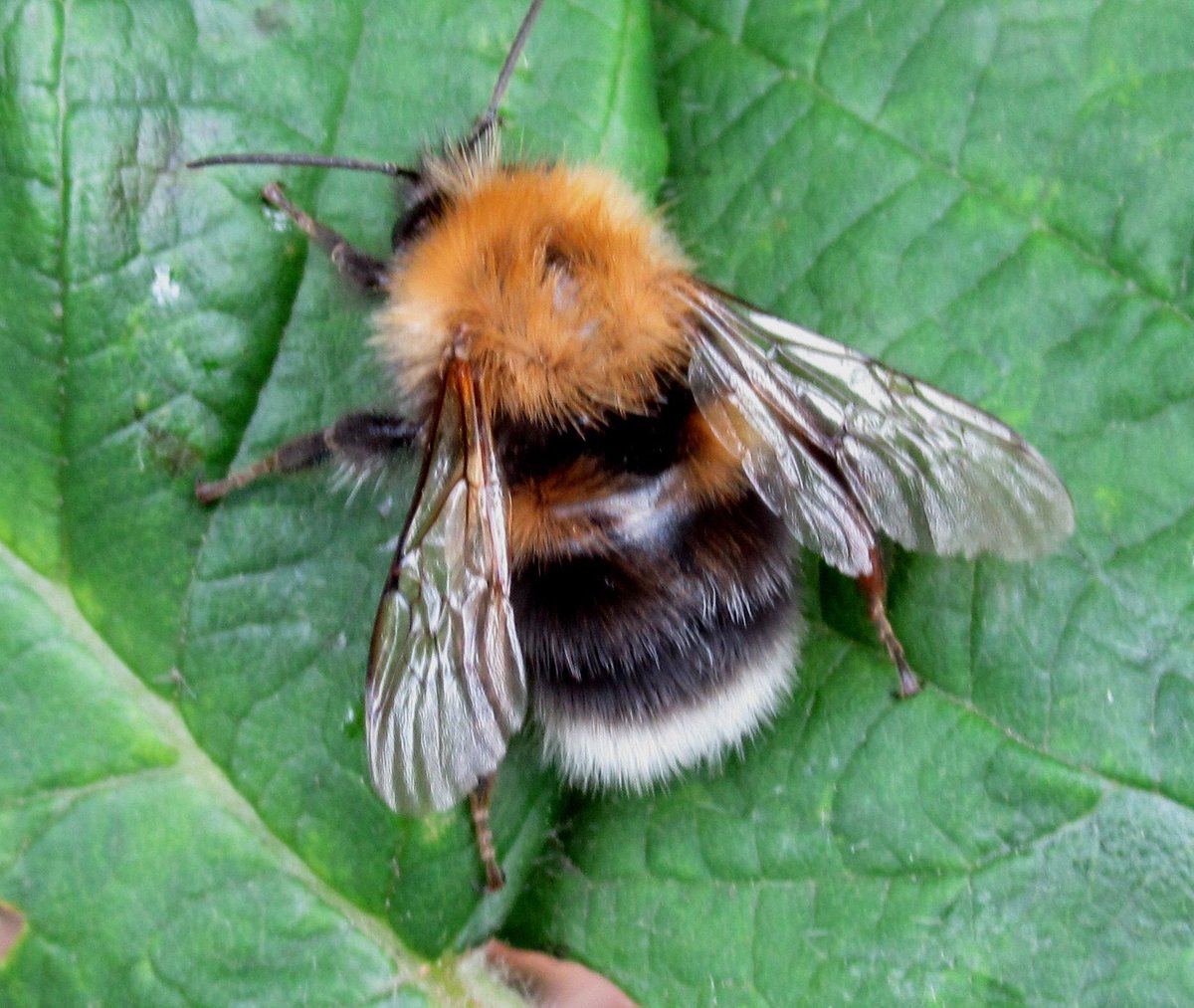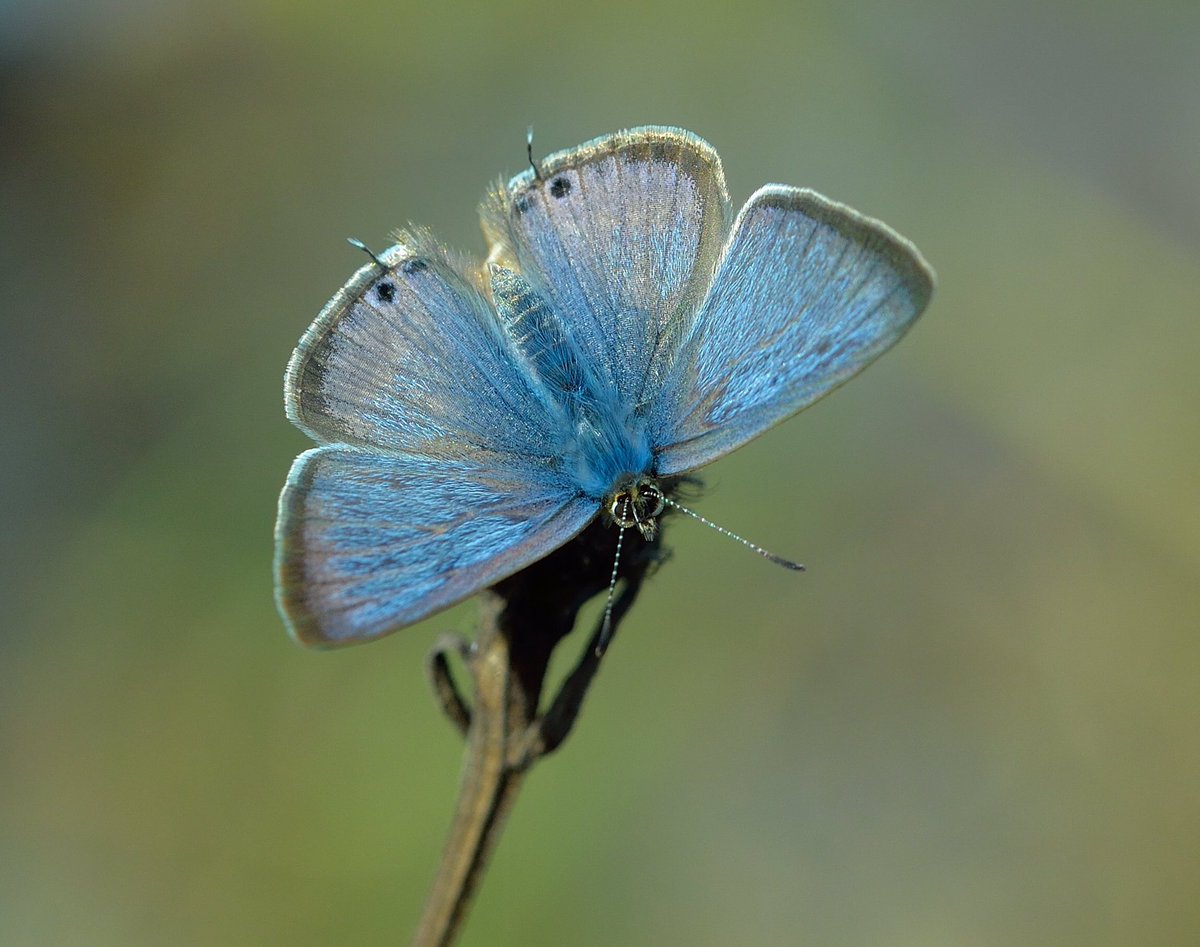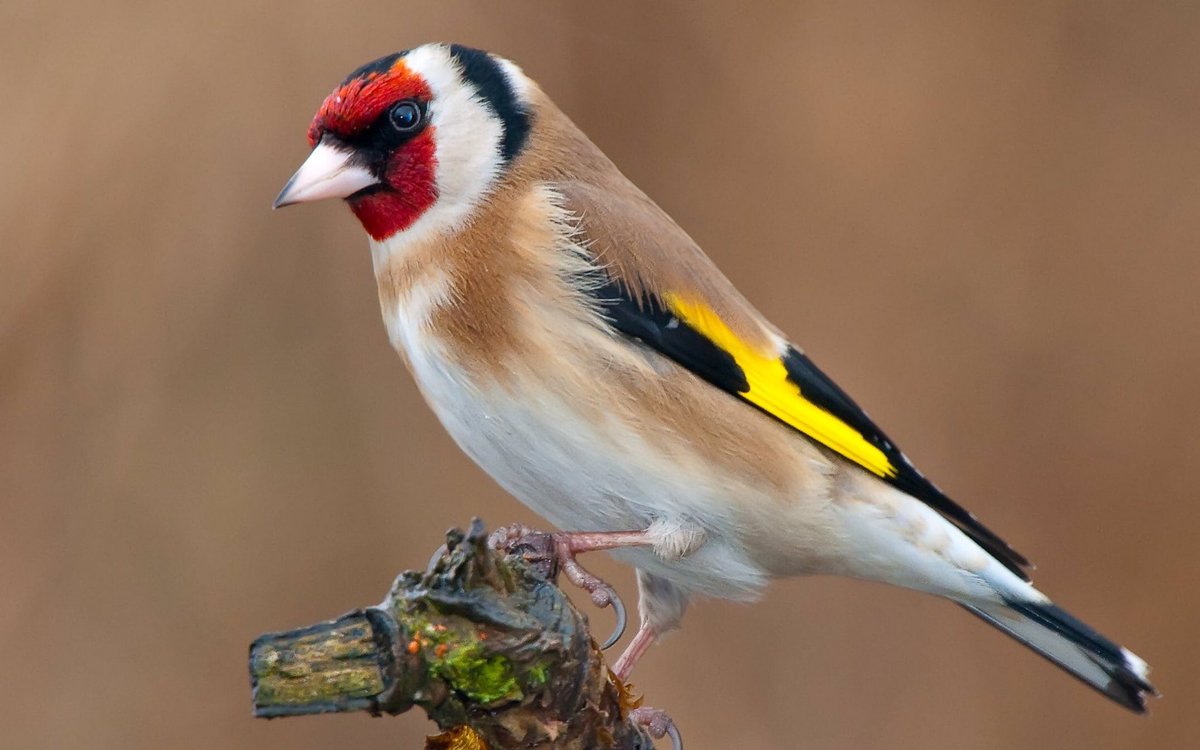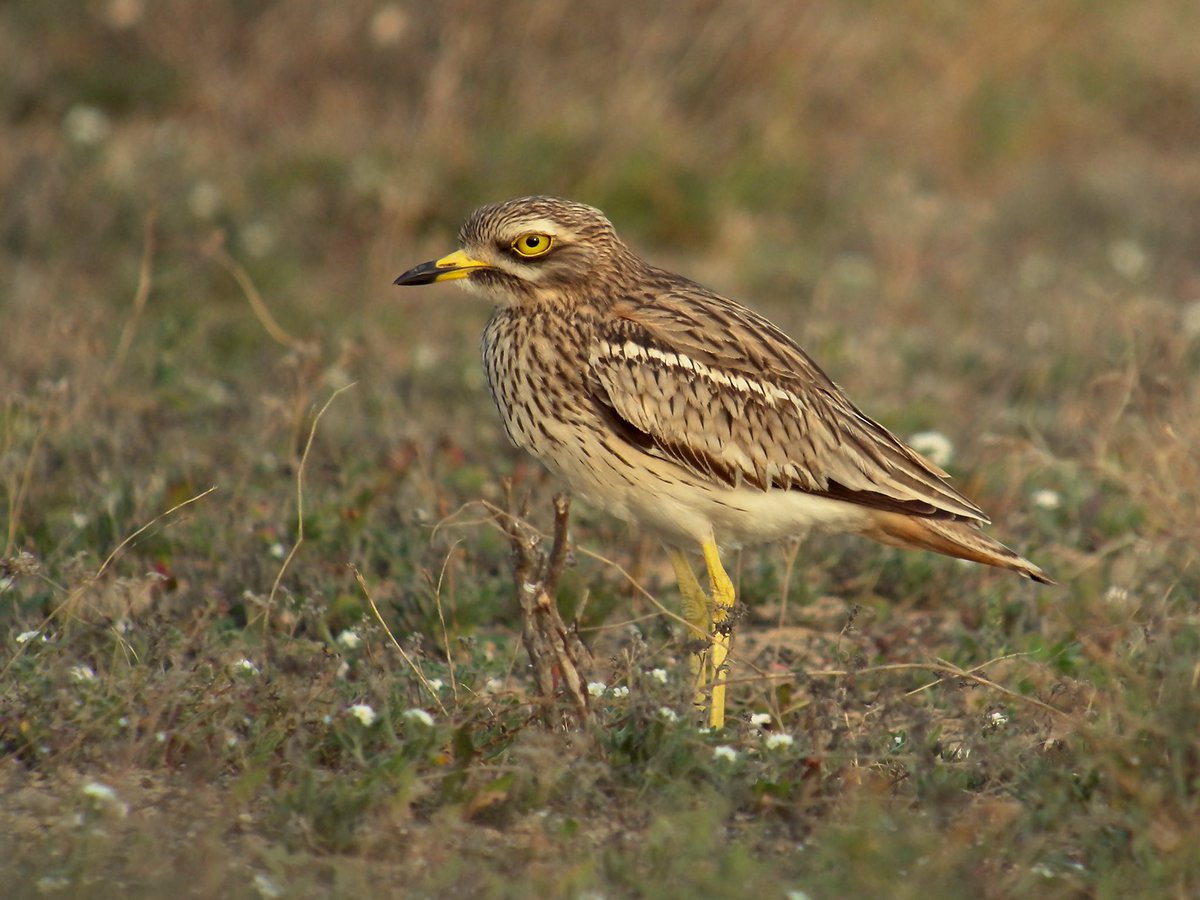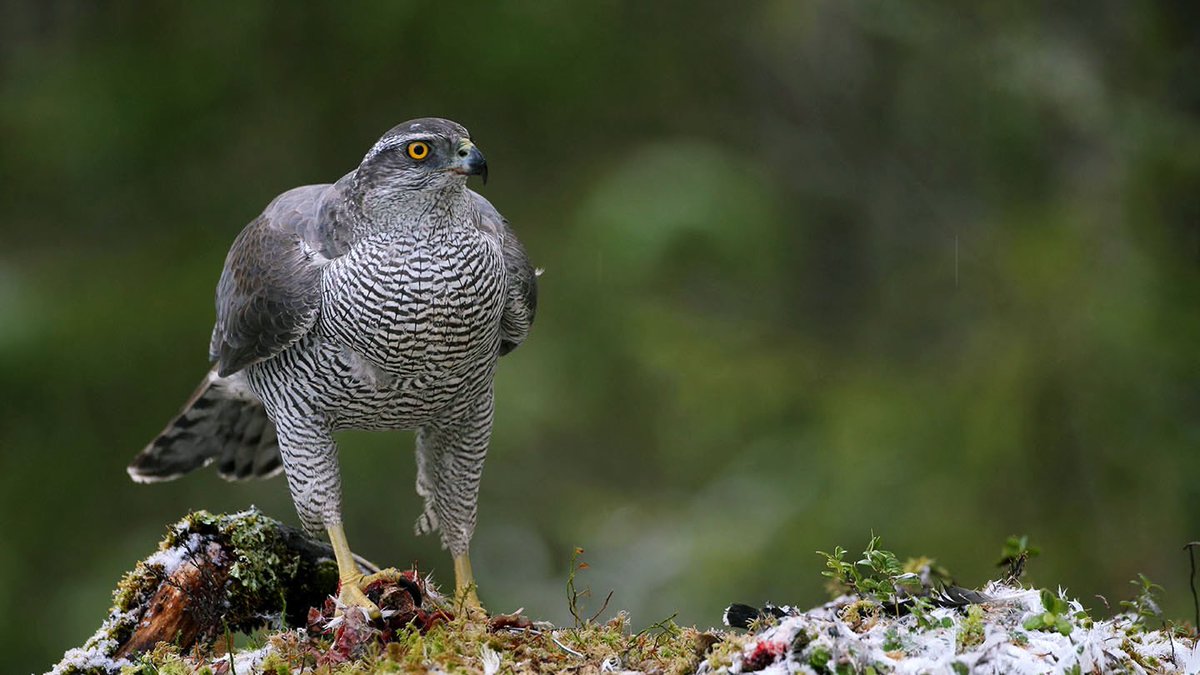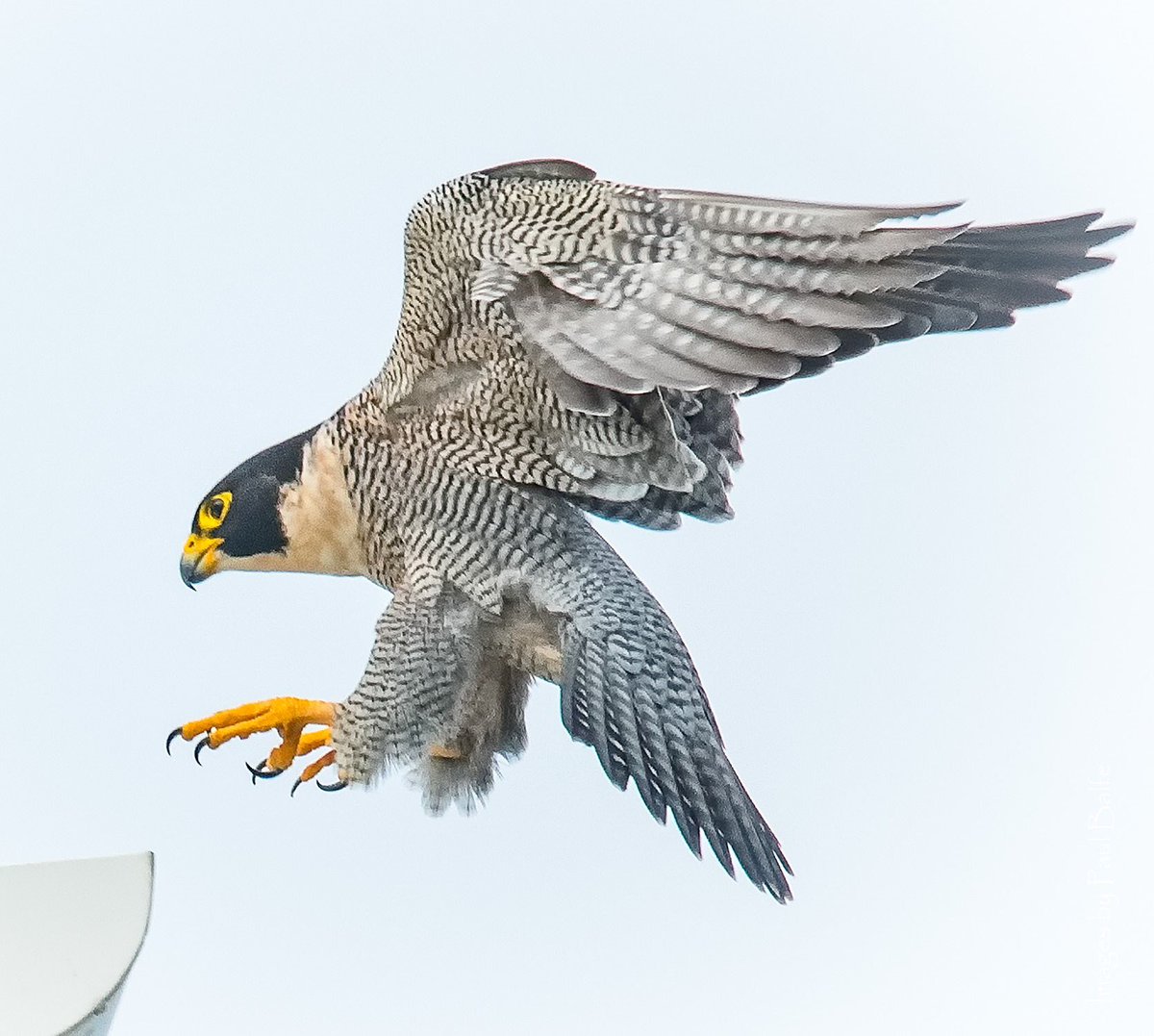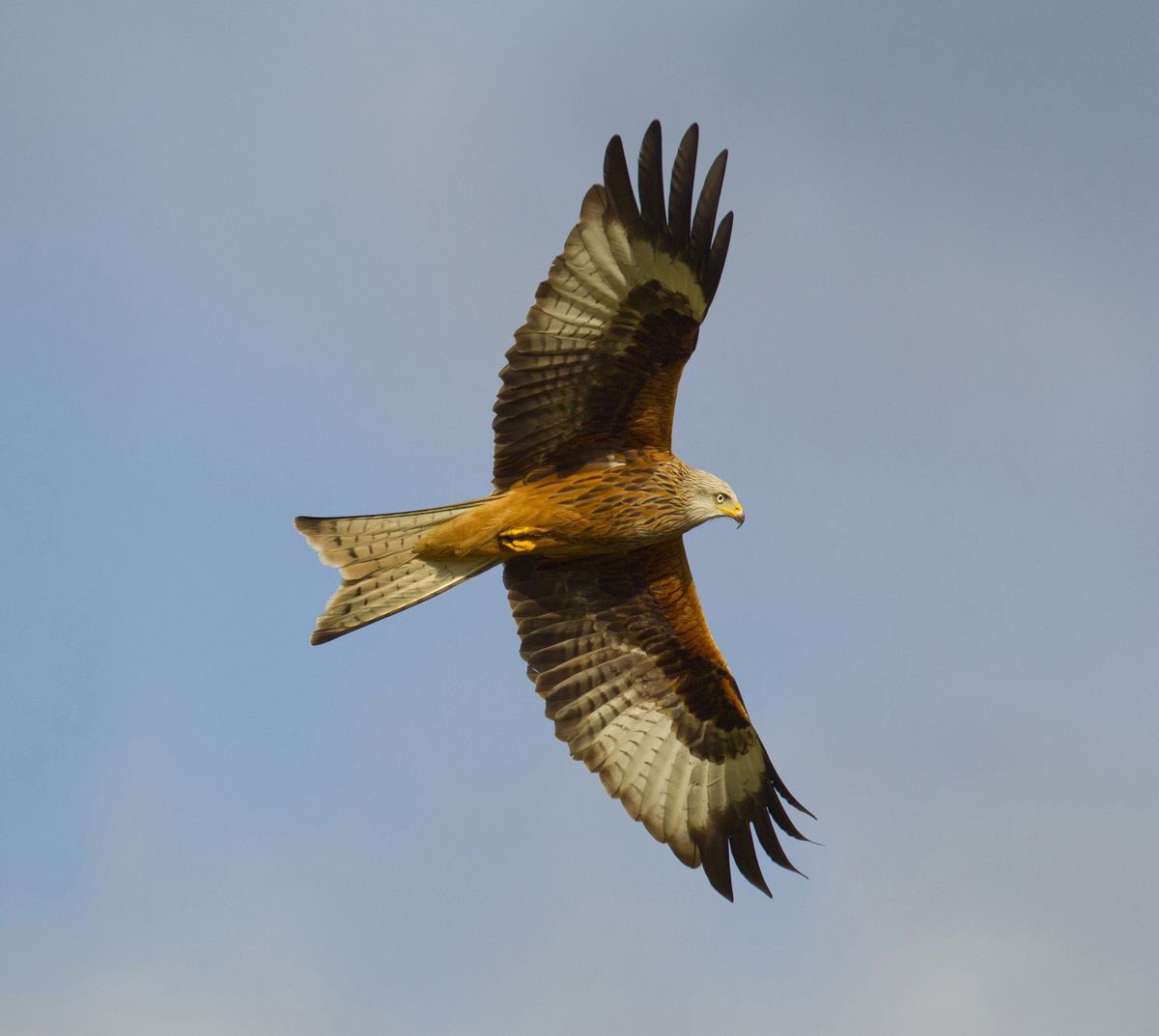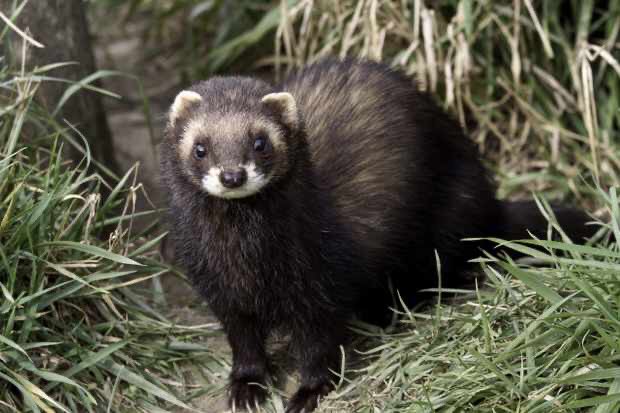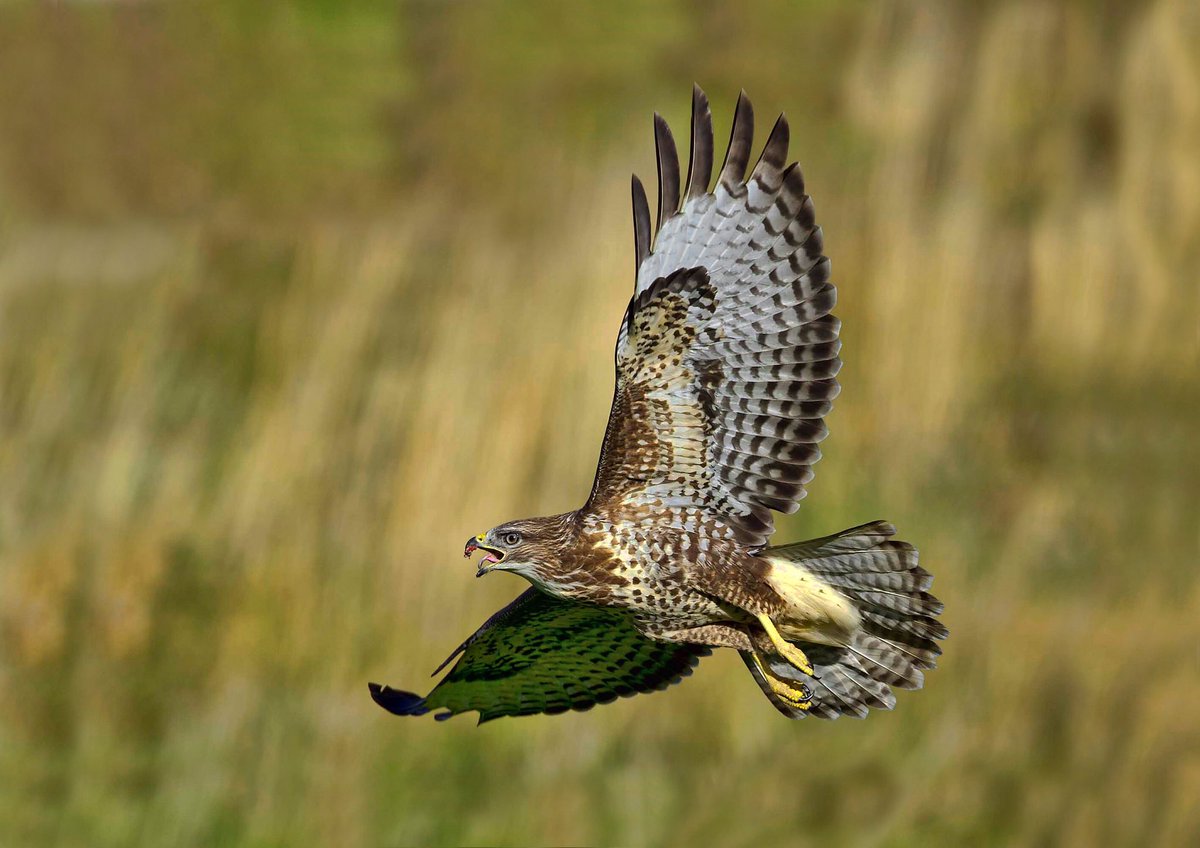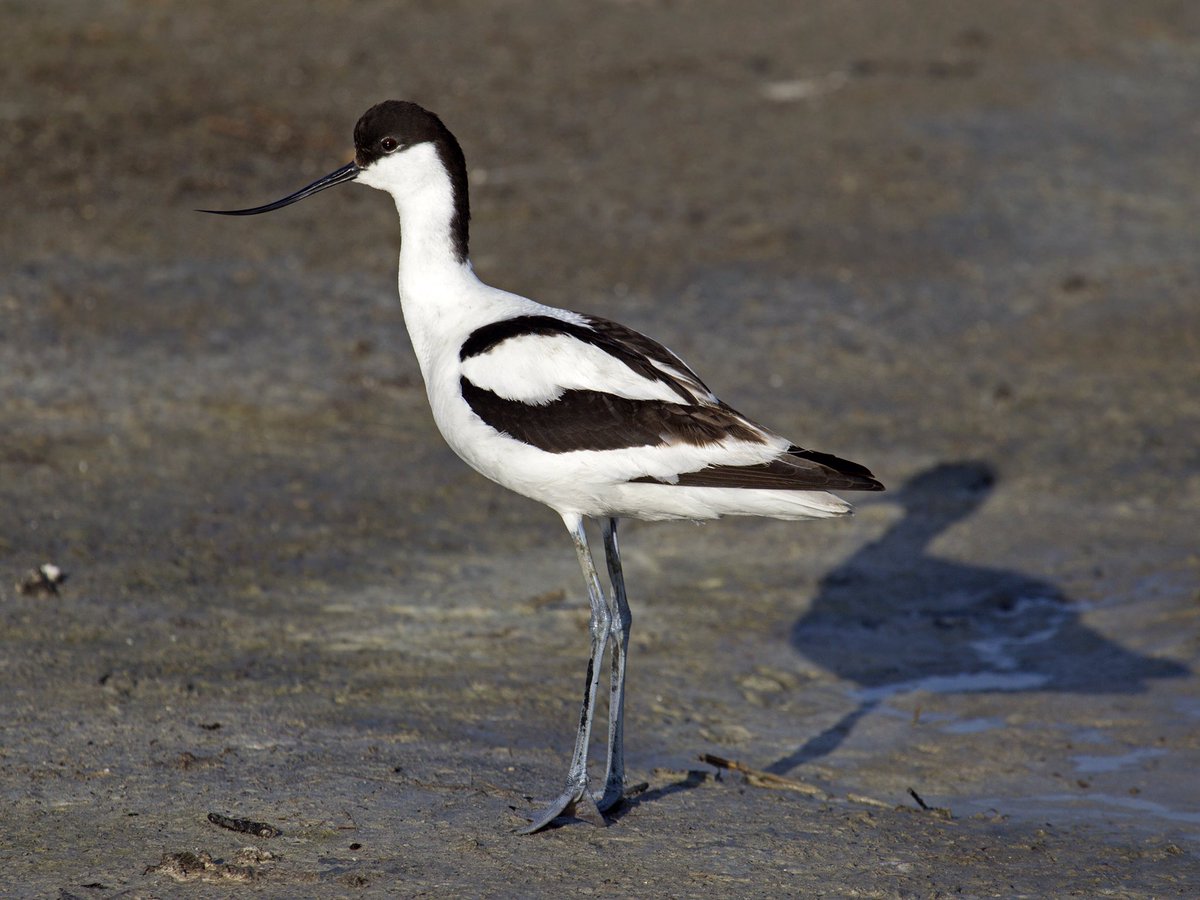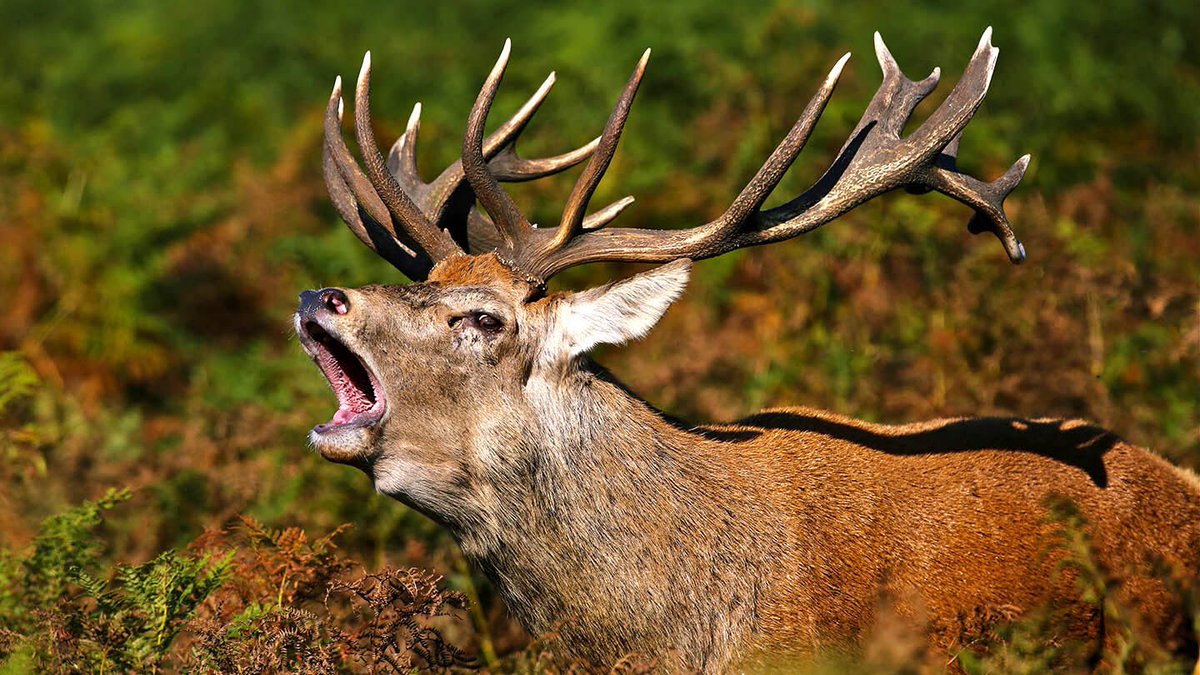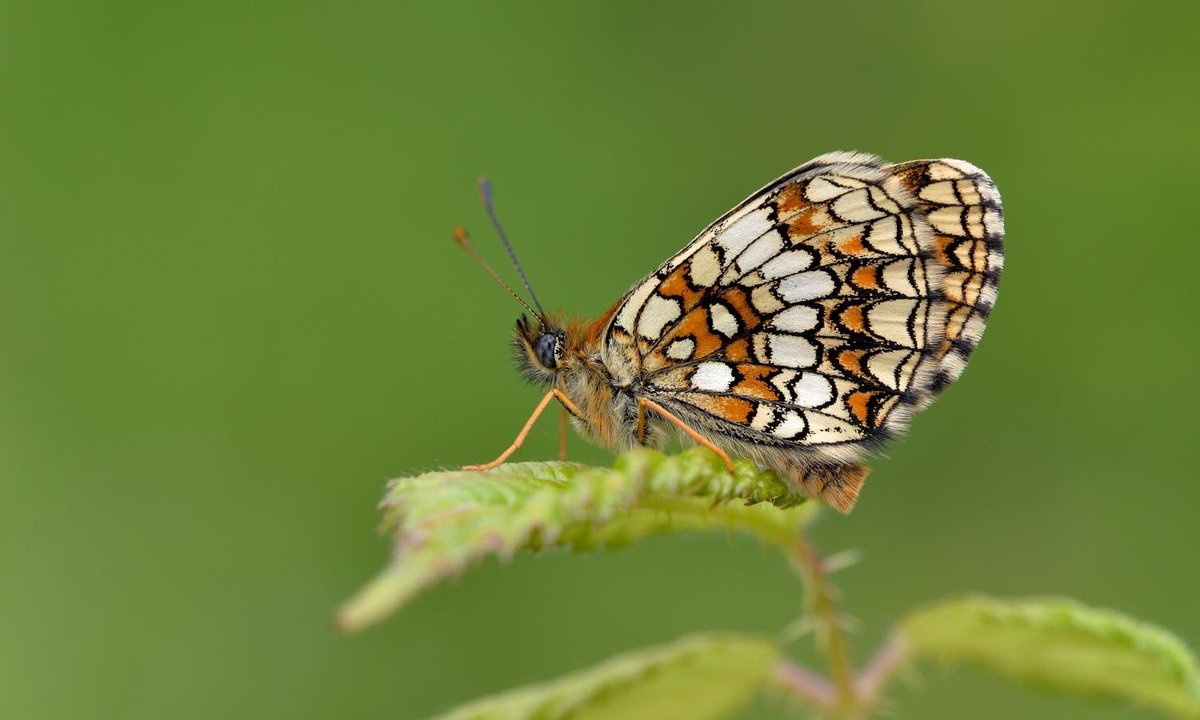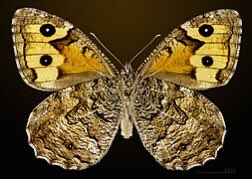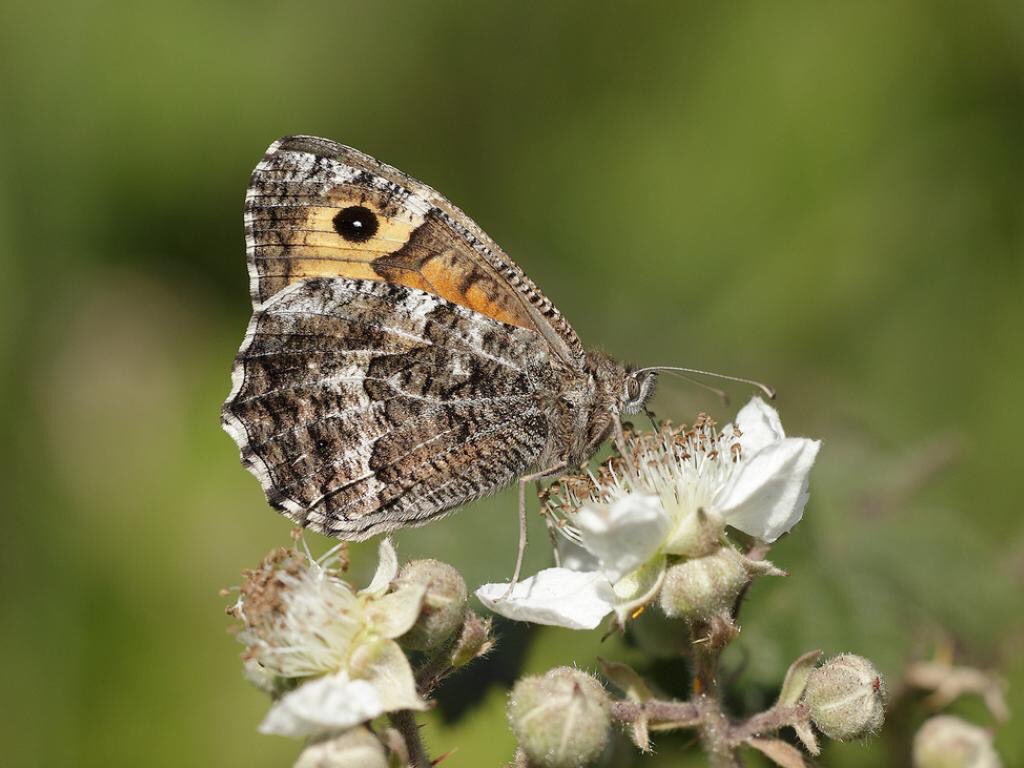When we discuss native species in some cases we are talking about animals which walked here before Britain became an island.
Birds don’t understand that, colonisation or loss are part of natural biological dynamics, we are concerned by loss if human activity causes it.
Birds don’t understand that, colonisation or loss are part of natural biological dynamics, we are concerned by loss if human activity causes it.
Cetti’s warbler started to colonise England in 1971, still a big deal when I started birdwatching in later 1970s.
https://britishbirds.co.uk/wp-content/uploads/article_files/V68/V68_N10/V68_N10_P393_408_A077.pdf
https://britishbirds.co.uk/wp-content/uploads/article_files/V68/V68_N10/V68_N10_P393_408_A077.pdf
No less a native bird, climate change may be involved, yes human activities have impacted climate, but climate also has natural fluctuations, we can assume that history has a number of colonisations, either due to habitat change, climate, or an evolutionary change in a species
colonised 15th century (landscape change)
https://britishbirds.co.uk/wp-content/uploads/2014/05/V104_N04_P180%E2%80%93191_A.pdf
https://britishbirds.co.uk/wp-content/uploads/2014/05/V104_N04_P180%E2%80%93191_A.pdf
Crane extinct 1542 recolonised Broads Norfolk 1981
going to see them in mid 1980s when it was still fairly secret was thrilling
https://www.researchgate.net/profile/Andrew_Stanbury/publication/289908650_The_changing_status_of_the_common_crane_in_the_UK/links/5c8f6102a6fdcc38175a9303/The-changing-status-of-the-common-crane-in-the-UK.pdf?origin=publication_detail
going to see them in mid 1980s when it was still fairly secret was thrilling
https://www.researchgate.net/profile/Andrew_Stanbury/publication/289908650_The_changing_status_of_the_common_crane_in_the_UK/links/5c8f6102a6fdcc38175a9303/The-changing-status-of-the-common-crane-in-the-UK.pdf?origin=publication_detail
Bittern, lost 1880s recolonised by 1911
https://www.researchgate.net/profile/Simon-Wotton/publication/283080549_Bitterns_and_Bittern_Conservation_in_the_UK/links/5cc806294585156cd7bbcad4/Bitterns-and-Bittern-Conservation-in-the-UK.pdf?origin=publication_detail
Perhaps first photo taken of a not yet able to fly young bittern swimming across a pool to join calling mother, females rear without male (my photo)
https://www.researchgate.net/profile/Simon-Wotton/publication/283080549_Bitterns_and_Bittern_Conservation_in_the_UK/links/5cc806294585156cd7bbcad4/Bitterns-and-Bittern-Conservation-in-the-UK.pdf?origin=publication_detail
Perhaps first photo taken of a not yet able to fly young bittern swimming across a pool to join calling mother, females rear without male (my photo)
I visited in 1984 seeing great egret one of Europes rarest birds was incredible, nobody imagined they would be breeding in UK in 2012
https://www.researchgate.net/profile/Lukasz-Lawicki/publication/264911105_The_Great_White_Egret_in_Europe_population_increase_and_range_expansion_since_1980/links/53f5f2960cf22be01c3fc193/The-Great-White-Egret-in-Europe-population-increase-and-range-expansion-since-1980.pdf?origin=publication_detail
https://www.researchgate.net/profile/Lukasz-Lawicki/publication/264911105_The_Great_White_Egret_in_Europe_population_increase_and_range_expansion_since_1980/links/53f5f2960cf22be01c3fc193/The-Great-White-Egret-in-Europe-population-increase-and-range-expansion-since-1980.pdf?origin=publication_detail
Marsh harrier, lost 1899, recolonised 1927, one 1 pair 1971
https://britishbirds.co.uk/wp-content/uploads/article_files/V91/V91_N06/V91_N06_P210_218_A058.pdf
now over 400 pairs
https://britishbirds.co.uk/wp-content/uploads/article_files/V91/V91_N06/V91_N06_P210_218_A058.pdf
now over 400 pairs
Conservation works, habitat, stopping persecution
sometimes reintroduction
http://britishbirds.co.uk/wp-content/uploads/article_files/V100/V100_N08/V100_N8_18_27.pdf
https://www.researchgate.net/profile/Ian_Carter3/publication/286913423_The_role_of_reintroductions_in_conserving_British_birds/links/56a7472e08aeded22e36c35d/The-role-of-reintroductions-in-conserving-British-birds.pdf?origin=publication_detail
sometimes reintroduction
http://britishbirds.co.uk/wp-content/uploads/article_files/V100/V100_N08/V100_N8_18_27.pdf
https://www.researchgate.net/profile/Ian_Carter3/publication/286913423_The_role_of_reintroductions_in_conserving_British_birds/links/56a7472e08aeded22e36c35d/The-role-of-reintroductions-in-conserving-British-birds.pdf?origin=publication_detail
photos found birdguides ebird google image search
Rorippa islandica Northern yellow-cress
goose assisted
https://citeseerx.ist.psu.edu/viewdoc/download?doi=10.1.1.665.1859&rep=rep1&type=pdf
goose assisted
https://citeseerx.ist.psu.edu/viewdoc/download?doi=10.1.1.665.1859&rep=rep1&type=pdf
creeping lady's-tresses
orchids have dust like seeds, population at Holkham Norfolk wind distributed?
orchids have dust like seeds, population at Holkham Norfolk wind distributed?
Winged insects, beetles, flies, many taxa are colonising
Nature depletion is true, but it is not across all species, some are big winners, others doing OK, others in trouble
The danger is we lump everything into gloom and despair, well it is not all gloom, conservation works, done larger and connected it will do more.
The danger is we lump everything into gloom and despair, well it is not all gloom, conservation works, done larger and connected it will do more.
Goldfinch increased by 80%
bird feeding in gardens?
In Victorian England you were more likely to see one in a cage in some regions so busy were bird-catchers for pet trade, no protection
bird feeding in gardens?
In Victorian England you were more likely to see one in a cage in some regions so busy were bird-catchers for pet trade, no protection
Declines are real
https://assets.publishing.service.gov.uk/government/uploads/system/uploads/attachment_data/file/938272/England_Wild_Birds_1970-2019_final_.pdf
intensive farmland, plantation (not all species)
wetland nature reserves, seabirds, estuaries, places managed for conservation are doing much better
Stone curlew, a farmland bird targeted for conservation, population increased
https://assets.publishing.service.gov.uk/government/uploads/system/uploads/attachment_data/file/938272/England_Wild_Birds_1970-2019_final_.pdf
intensive farmland, plantation (not all species)
wetland nature reserves, seabirds, estuaries, places managed for conservation are doing much better
Stone curlew, a farmland bird targeted for conservation, population increased
We should not deny serious issues, declines, habitat loss, pollution, persecution, but it is not universal across all species, conservation work achieves results
bigger, more dynamic, connected
Godhawk, increasing, spreading (falconers escapes, releasers, protection)
bigger, more dynamic, connected
Godhawk, increasing, spreading (falconers escapes, releasers, protection)
Avocet
lost for 100 years recolonising 1940s now breeding in West Midlands
https://britishbirds.co.uk/wp-content/uploads/article_files/V71/V71_N03/V71_N03_P102_122_A025.pdf
lost for 100 years recolonising 1940s now breeding in West Midlands
https://britishbirds.co.uk/wp-content/uploads/article_files/V71/V71_N03/V71_N03_P102_122_A025.pdf
Bird heavy yes, but other species such as roe deer are much commoner than in history
reintroduced to England in 1800
reintroduced to England in 1800
Butterfly populations which seemed in terminal decline have improved due to conservation work
Heath fritillary
Heath fritillary
The mixed fortunes of different species is complex, success and problems, nature depletion is complex, it does not mean everything
99% loss of species rich permanent grassland on farms, yes that means massive loss
habitat!
99% loss of species rich permanent grassland on farms, yes that means massive loss
habitat!
Some species are generalists, a roe deer will live in any habitat, intensive farm, ancient meadows
specialist species, numerous plants, fungi, insects, they need special habitat, they are in trouble
Grayling
specialist species, numerous plants, fungi, insects, they need special habitat, they are in trouble
Grayling
I live next to a sand dune national nature reserve this species used to visit my garden, why has it declined? likely due to Nitrogen Oxide from our car exhausts, this is an airborne plant fertiliser, the bare sand patches in dunes this butterfly needs is covered by grass
We need dynamic disturbance, and control of slurry, ammonia, nitrogen oxide, pollution,
many issues, no one solution, no magic thinking fixes this, hard work in multiple unrelated issues
well related to near 70 million of us and our consumption
many issues, no one solution, no magic thinking fixes this, hard work in multiple unrelated issues
well related to near 70 million of us and our consumption

 Read on Twitter
Read on Twitter